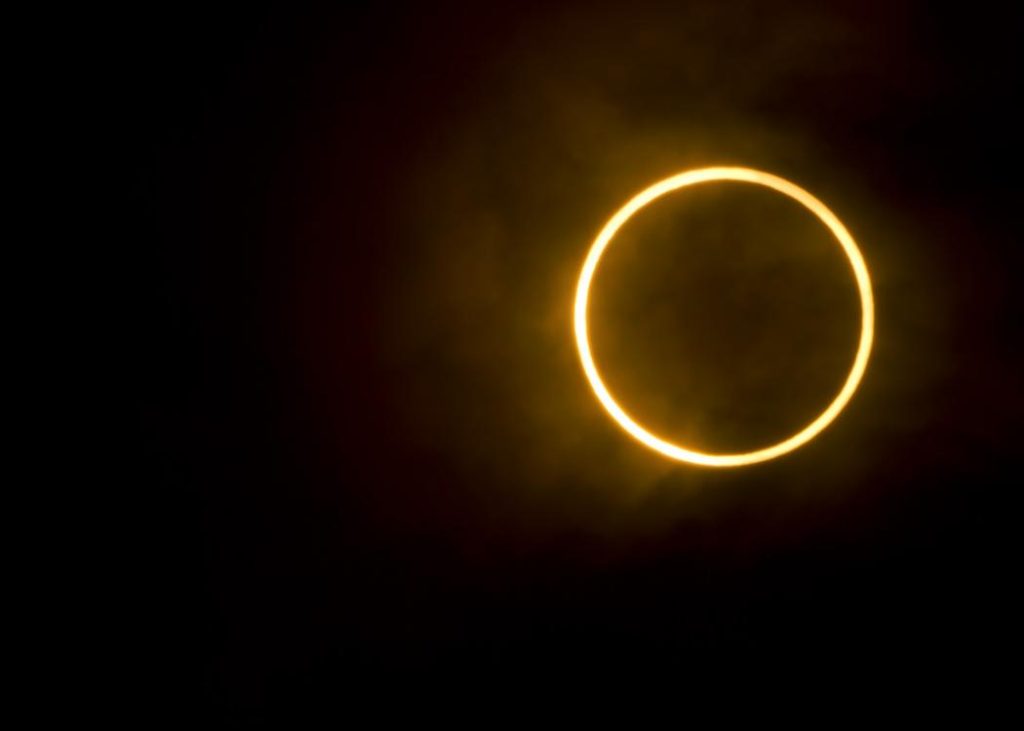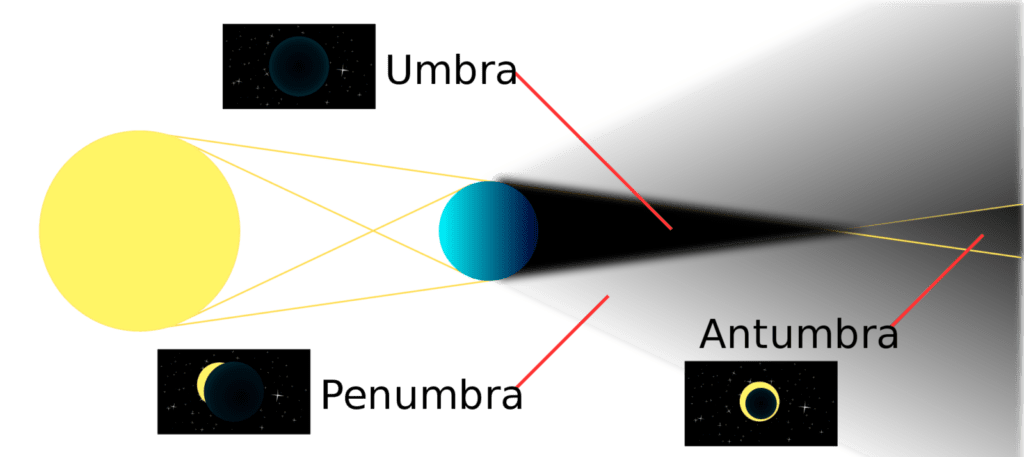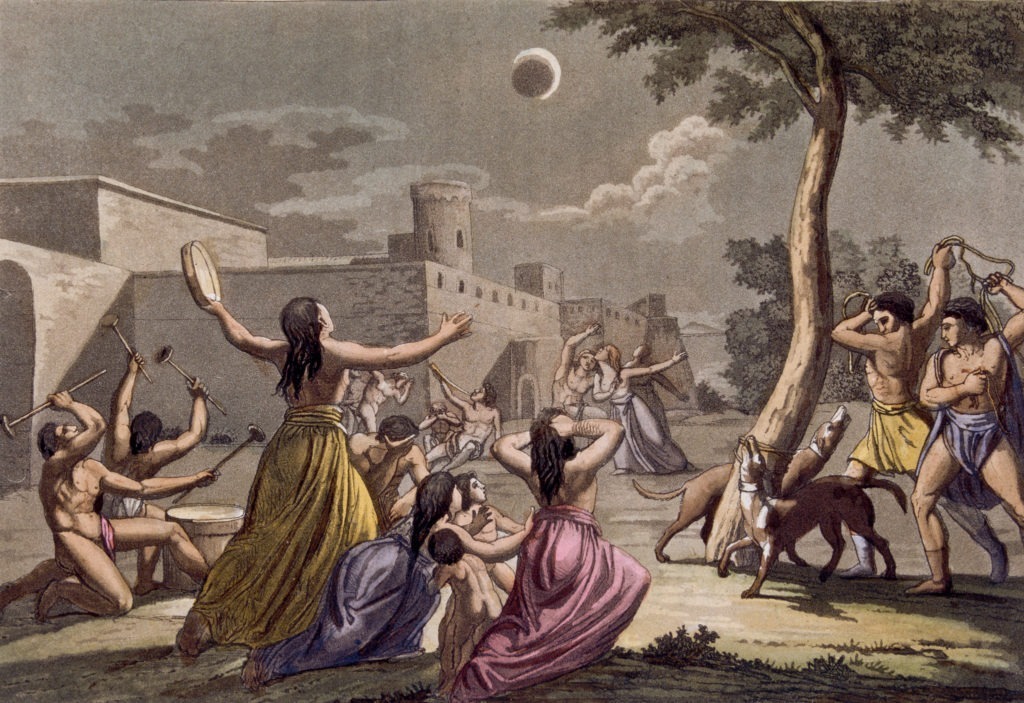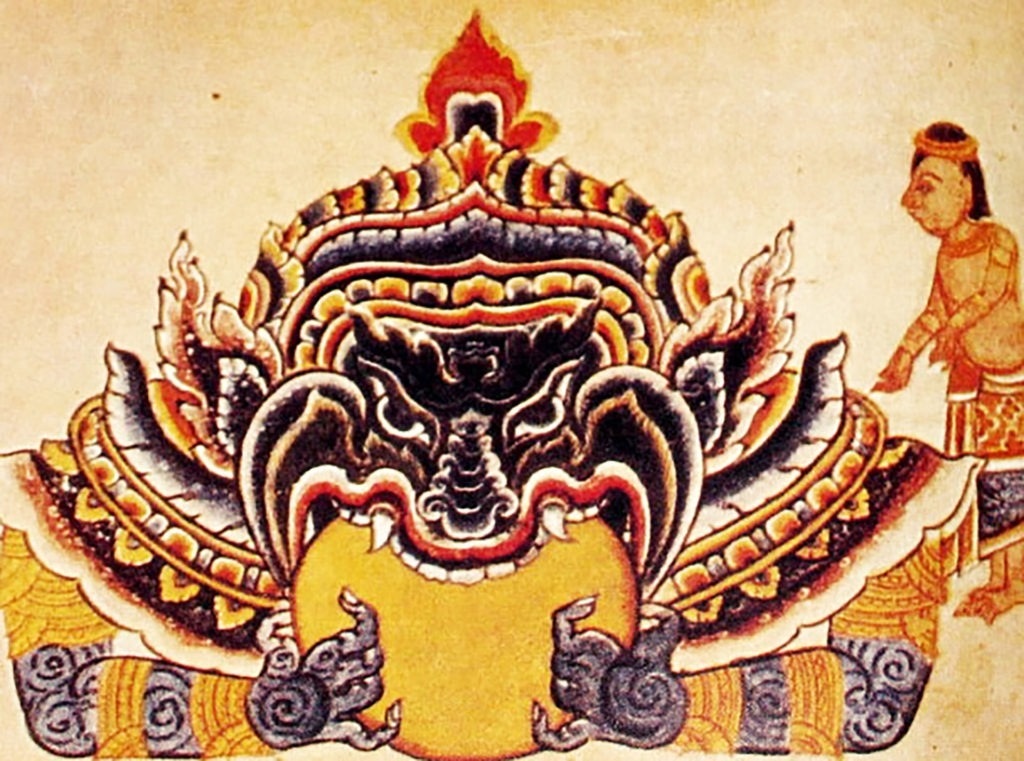Get ready to experience another solar eclipse on June 21, 2020.If you are a resident of South/East Europe, Asia, North of Australia or Africa, chances are that you may be the few lucky ones to view this beautiful astronomical phenomenon at its best.

A PERFECT ANNULAR SOLAR ECLIPSE
WHAT ARE ECLIPSES?
Eclipses are a naturally occurring phenomena when two or more celestial bodies are caught playing a game of shadows. As Earthlings, we can view two different kinds of eclipses: Solar eclipse and Lunar eclipse.
LUNAR ECLIPSE: It happens on a night of a full moon, when the Earth comes between the Sun and the moon and its shadow is cast on the moon making it appear darker or sometimes redder than usual.
SOLAR ECLIPSE: It happens when the moon comes between the Sun and the Earth and casts a shadow on our planet. Depending on where we reside on the Earth and the exact distance between the Earth and the moon, we may see one out of the different versions of this phenomena:
- Annular Solar Eclipse
- Total Solar Eclipse
- Partial Solar Eclipse

THE VIEW OF THE SUN DURING DIFFERENT ECLIPSES
WAIT! ISN’T THE MOON SMALLER THAN THE SUN?
The apparent size of the moon as seen from our planet is similar to the Sun. This is the reason that even though the moon is smaller as compared to the sun, it is so close to the Earth that both the moon and the Sun appear to have similar disc size in our sky. This is also the reason why the moon can completely block the sun’s light during a total solar eclipse, while the other times, it blocks the star partially.
MORE ABOUT SOLAR ECLIPSES:
Depending on our position in the shadow region of the moon, we may see a total, partial or an annular solar eclipse.

DIFFERENT SHADOW REGIONS
- A TOTAL SOLAR ECLIPSE would be visible if we reside in the umbra region of the shadow of the moon.
- A PARTIAL SOLAR ECLIPSE would be visible if we reside in the penumbra region of the shadow of the moon.
- An ANNULAR SOLAR ECLIPSE would be visible if we reside in the antumbra region of the shadow of the moon.
MARK YOUR CALENDARS; JUNE 21, 2020:
On this day, residents of South/East Europe, Asia, North of Australia and Africa can view a perfect annular solar eclipse.

Regions in dark red: perfect annular solar eclipse
Regions lighter than red: partial solar eclipse
WHERE TO VIEW IT FROM:
The eclipse starts at one location and ends at another. The times below are actual times (in UTC) when the eclipse occurs.

The eclipse begins in Impfondo, South Africa at 3.51 am (GMT). It will reach Gharsana Rajasthan at 10.12 am (IST), travel to parts of Haryana (Sirsa), Uttarakhand (Dehradun) and reach Tehri in Uttarakhand at 10.25 am (IST) which is the last stop for India. The eclipse finally ends in Xiamen, China at 10.24 pm (GMT).
HOW TO PREPARE FOR A SOLAR ECLIPSE:
In order to view a solar eclipse, keep in mind the following:
- Never look at the sun or a solar eclipse through naked eyes as the harmful radiations from this bright star can cause permanent damage to human eyes.
- Always use safety methods like solar view goggles or indirect methods like pinhole projector or ball projection to view the image of the sun.

SOLAR VIEW GOGGLES FOR SAFELY OBSERVING THE SUN

BALL PROJECTION

PINHOLE PROJECTOR
- We can also view the image of the sun formed on a water surface due to reflection.
- Remember to avoid regular sunglasses, x-ray sheets, photographic film or any regular glasses to view the sun as these are not equipped to block the harmful radiations of the sun.
DEBUNKING ECLIPSE MYTHS:
- In Vietnam, people believed that a solar eclipse was caused by a giant frog devouring the Sun, while Norse cultures blamed wolves for eating the Sun.

- In ancient China, a celestial dragon was thought to lunch on the Sun, causing a solar eclipse. In fact, the Chinese word of an eclipse, chih or shih, means to eat.
- According to ancient Hindu mythology, the deity Rahu is beheaded by the gods for capturing and drinking Amrita, the gods’ nectar. Rahu’s head flies off into the sky and swallows the Sun causing an eclipse.

- Traditionally, people in many cultures get together to bang pots and pans and make loud noises during a solar eclipse. It is thought that making a noise scares the demon causing the eclipse away.
Fear of solar eclipses still exists today.In many parts of India, people fast during a solar eclipse due to the belief that any food cooked while an eclipse happens will be poisonous and impure. Not all superstitions surrounding solar eclipses are about doom. In Italy, for example, it is believed that flowers planted during a solar eclipse are brighter and more colorful than flowers planted any other time of the year.
IS IT REALLY DANGEROUS?
Scientists and astronomers around the world have debunked any such claims. There is no scientific evidence that solar eclipses can affect human behavior, health, or the environment. So get geared up to observe this celestial occurrence!

